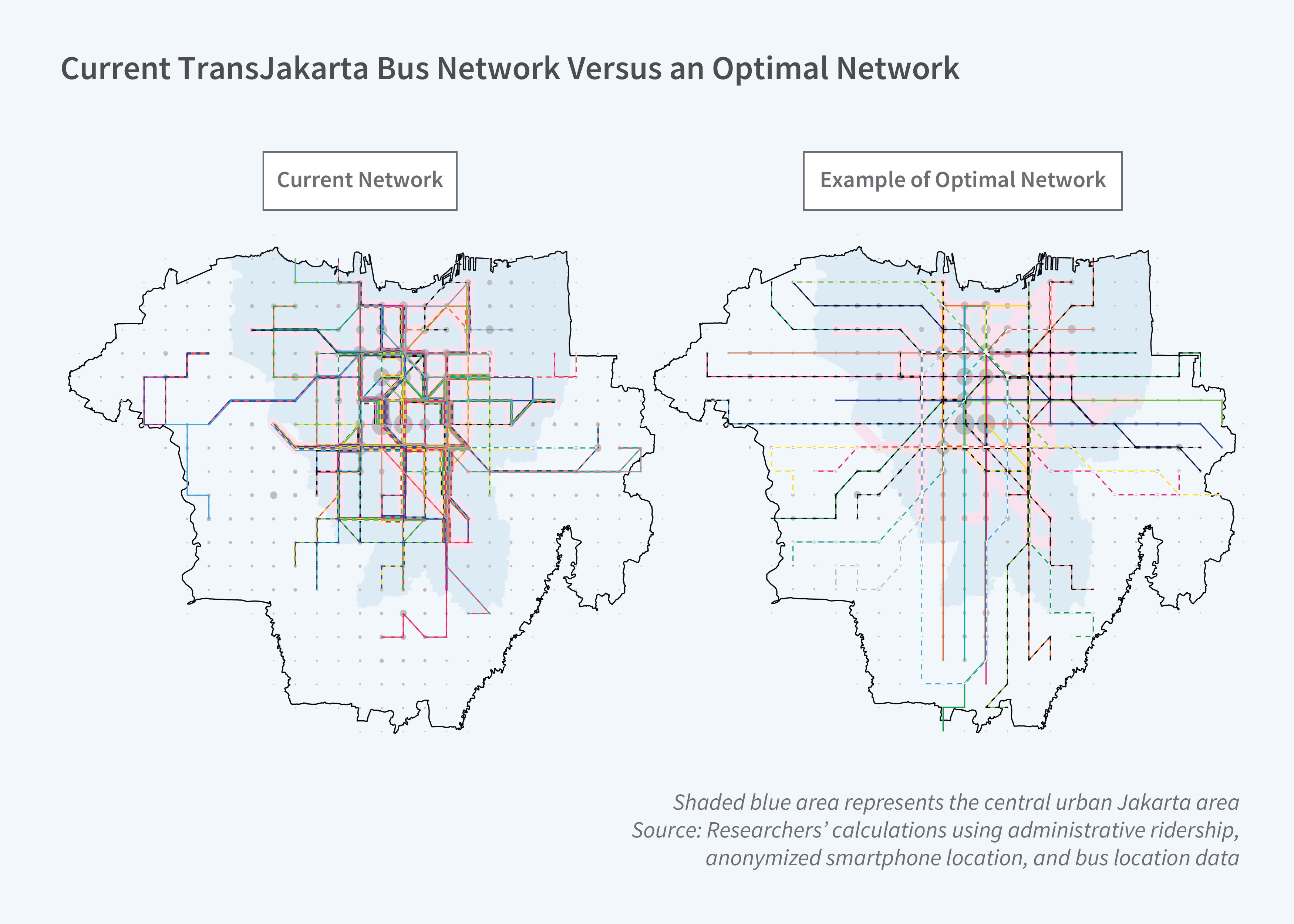Designing a Public Transit Network: Evidence from Jakarta

TransJakarta, the bus system serving greater Jakarta, Indonesia, undertook a major expansion in the last decade. It tripled its routes and doubled the number of buses in operation between January 2016 and February 2020. In Optimal Public Transportation Networks: Evidence from the World’s Largest Bus Rapid Transit System in Jakarta (NBER Working Paper 31369), Gabriel Kreindler, Arya Gaduh, Tilman Graff, Rema Hanna, and Benjamin A. Olken examine the effects of this expansion on ridership and aggregate trip flows across this 120-mile network.
The TransJakarta system integrates Bus Rapid Transit (BRT) lines that operate in dedicated bus lanes with designated stations, and non-BRT routes that run on some city streets as well as in BRT corridors, making stops at BRT stations.
Bus ridership responds to improvements in wait time, travel time, and access to direct connections.
The researchers study the impact of introducing new routes on bus ridership and on aggregate trip flows, measured using anonymized smartphone location data. They measure the impact of three types of changes induced by new route launches. First, they find a 16 percent increase in ridership when two locations went from being connected using transfers to being directly connected, in those cases when the new route had a similar travel time as previous connections. Second, the effect on ridership was larger — 27 percent — when the new direct route was also faster than the existing transfer connections. Third, ridership increased by 9 percent when a new direct route launch increased the frequency of buses between two locations that were already directly connected. The last effect implies that a 10 percent decrease in wait times leads to a 2.9 percent increase in ridership on BRT routes, while for non-BRT routes this elasticity is 1.05. The researchers did not find aggregate trip volume increases after new route launches.
To interpret these empirical findings, the researchers develop a model of demand for public transportation and estimate it by matching the impacts on bus ridership. They find that commuters in Jakarta are 2.4 times more sensitive to wait time for the bus than time spent on the bus. This may capture the uncertainty in wait times and differences in the experience of waiting compared to riding the bus. The pure transfer penalty, which captures dislike for transfers aside from the travel and wait time involved, is small and not statistically significantly different from zero.
The researchers use the estimated demand model to compare the post-expansion TransJakarta network with networks that deliver high levels of total rider welfare. To do so, they introduce a framework for describing the characteristics of optimal networks. The current network is characterized by a concentration on the city’s urban core, with relatively few bus routes connecting to the city’s outskirts. In contrast, the optimal network is less dense and extends beyond the center of the city, connecting 57 percent more locations. In the optimal network, 39 percent of bus stops are connected by either a direct or a transfer bus connection; in the current network, only 12 percent are. The researchers estimate that the equivalent variation benefit of shifting to the optimal network would be shaving 23 minutes off the travel time for each bus user in the current network. Despite the high value that commuters place on wait time, these results suggest that system ridership would have been higher if the network had been focused on broad expansion rather than on intensified service in the urban core.
—Leonardo Vasquez


